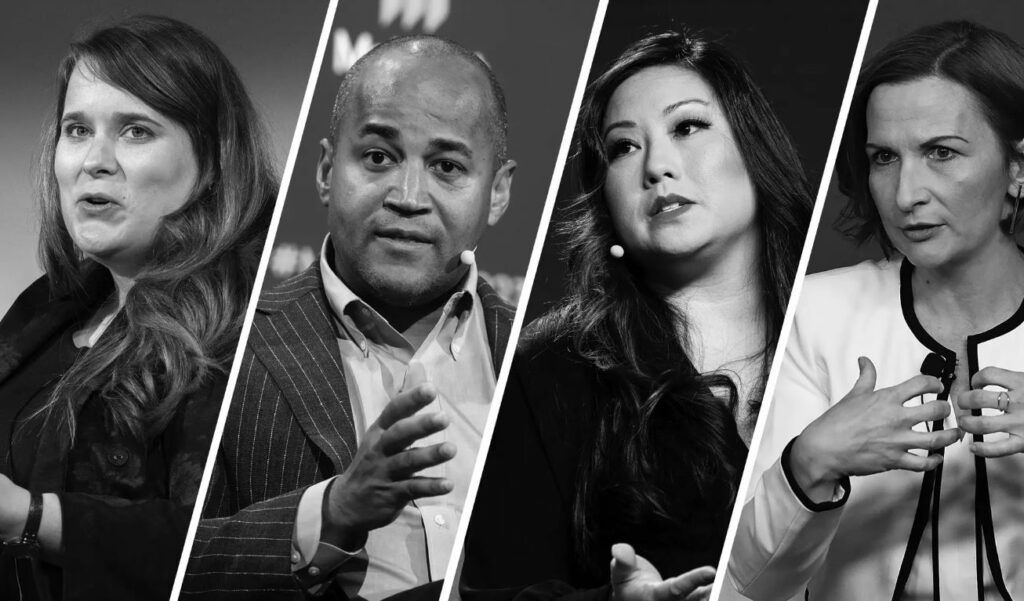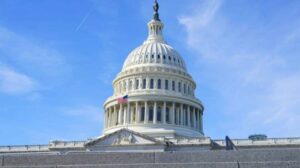
After years of setbacks and government crackdowns, the future of crypto in the U.S. is looking brighter. The unexpected catalyst? A type of digital currency that stays stable is the stablecoin.
Today, stablecoins, which are cryptocurrencies pegged to the U.S. dollar, are becoming central to Washington’s new vision for digital assets. With former President Donald Trump now openly supporting crypto and bipartisan efforts gaining momentum in Congress, crypto leaders see a real chance for America’s first major crypto legislation. But experts warn: if lawmakers hesitate or overcomplicate things, even this narrow opportunity could slip away.
This was the key message at a special TIME100 Talks event, “The Future of Finance: Can Regulation Power Innovation?”, held on Saturday, April 26, just ahead of the White House Correspondents’ Dinner. Some of the crypto world’s most influential voices and crypto leaders gathered to discuss how regulation could shape the next era of finance.
The panel was moderated by Andrew R. Chow, TIME’s technology correspondent, and featured:
- Dante Disparte, Chief Strategy Officer at Circle
- Caroline Pham, acting Chair of the Commodity Futures Trading Commission (CFTC)
- Jelena McWilliams, former Chair of the Federal Deposit Insurance Corporation (FDIC)
- Carole House, former Special Adviser for the White House National Security Council
Their consensus was clear: a focused stablecoin bill could help secure the U.S. dollar’s dominance in the digital economy. Crypto leaders emphasized that Congress must act quickly, before larger battles over the structure of crypto markets complicate the issue.

A Rare Moment for Crypto in Washington
Passing legislation in Washington is never easy, as McWilliams humorously noted. “You get done what you can get done, and you call it a victory,” she said.
Although the idea of regulating stablecoins has broad support, the process could still become tangled. Some lobbyists and crypto firms are pushing to pair stablecoin regulation with wider, more complicated market reforms, something the crypto leaders on the panel strongly opposed.
Disparte warned, “It would be an utter mistake to create a model where stablecoins and market structure are combined.” He added that such a move could rob President Trump of a bipartisan victory. “The stablecoin bill is ready. The President wants it on his desk. They can get it done before the summer recess, and there’s real energy to make it happen.”
Indeed, Washington’s energy around crypto has picked up. After once calling Bitcoin a “scam,” Trump has now embraced the industry, and the industry has embraced him back. Crypto companies, executives, and crypto leaders have poured tens of millions of dollars into campaign donations during the 2024 election cycle, helping to elect a more crypto-friendly Congress.
In March 2025, Trump announced he hoped to sign stablecoin legislation by August. Since then, both the House and Senate have advanced key bills, the STABLE Act and the GENIUS Act, through committee, setting the stage for historic crypto legislation.
Why Stablecoins Matter
At their core, stablecoins are designed to combine the speed and accessibility of crypto with the stability of traditional money. They are pegged to currencies like the U.S. dollar, avoiding the wild price swings seen in Bitcoin or Ethereum.
The stablecoin market has grown rapidly. It now represents a $238 billion market, up from $152 billion just a year ago. Stablecoins are increasingly used for cross-border payments, decentralized finance, and more.
Supporters and crypto leaders believe that stablecoins could:
- Strengthen the dollar’s global dominance
- Provide critical tools to economies battling inflation
- Modernize America’s financial system
Caroline Pham highlighted the bigger picture: “The key isn’t the vehicle, it’s the outcome. Good regulations are good. A money or banking system with no regulations is just ridiculous.”
The panelists emphasized that stablecoin regulation isn’t only about innovation. It’s also about financial stability, national security, and global competitiveness. “We need payments to move at the speed of the Internet,” Disparte said. “Domestically, it’s still a misery to move money fast.”
Carole House pointed out that Congress has debated stablecoin legislation for three consecutive sessions, only to see it stall each time. “This has been the low-hanging fruit,” she said. “I’m delighted we’re finally going to get it.”
Potential Pitfalls
Still, not everything about the pending bills is reassuring. Some experts and crypto leaders are concerned about a provision in the Senate’s GENIUS Act that would let foreign stablecoin issuers apply for U.S. licenses through the Treasury Department, without the tight oversight required of U.S. firms.
Disparte warned that allowing offshore stablecoin issuers to operate with looser standards could damage trust in dollar-backed assets. “I can’t build a car without an airbag and drop it on U.S. streets without meeting safety standards,” he said.
House agreed, warning that giving foreign firms easier access could harm true U.S. competitiveness.
The Political Tangle
Politics could still complicate everything. Trump’s deeper ties to the crypto world—especially after launching a Trump-branded stablecoin through World Liberty Financial, a venture backed by his family—have already raised ethical concerns. Critics worry that Trump’s financial interests could politicize the regulatory process, a fear shared by several crypto leaders.
Pham, nominated as CFTC Commissioner by President Biden but later appointed acting chair by Trump, noted the dramatic shift. “The previous Administration was skeptical, if not hostile, to crypto. Now, it’s an open and welcoming environment.”
She cited the first-ever White House Crypto Summit held last month and Trump’s Executive Order establishing a Strategic Bitcoin Reserve as major signs of the new approach.
“It was the first time to be in the room with new market participants in a truly open way, without stigma,” Pham said. She also noted that the CFTC has rescinded several 2018 advisories, acknowledging how far the industry has evolved.
McWilliams summed up the moment perfectly: “The crypto revolution – ‘cryptopalooza’ – is happening. If you’re not at the table, you’re on the table.”























